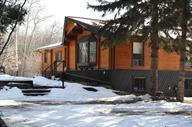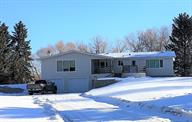Home Automation: Luxury & Convenience
Friday, March 31st, 2017
Home automation allows you to control systems in your home with a touch of a button. Where the first home automation systems were controlled only by a central panel, the latest in automation and mobile technology now allows homeowners to control their system from anywhere using a smartphone, tablet or computer.
Home automation can be installed during construction of a new home and in existing homes. Home automation can enhance your lifestyle and enjoyment of your home by adding luxury and convenience, enabling you to control things like lighting, blinds, temperature, music and video. They can also help protect your home and family through high-tech security systems and help you save on energy bills through energy efficient programming.
What exactly can I control with home automation?
Temperature: You can program the temperature in your home to increase and decrease during certain parts of the day, helping you to conserve energy and save on your utility bills.
Lighting: You can program your lights to come on when the sun goes down, or when you would be arriving home from work. You can also have your lights automatically shut off during the brighter parts of the day to reduce energy consumption. Lights can be controlled by a keypad in your home or from your smart phone, when you’re at home and when you are away. This is also a great security feature as lights that come on and off indicate to potential intruders that someone could be at home.
Window coverings: Automated blinds can be programmed to open automatically when you come home, close when the sun goes down or to open sporadically throughout the day to make it appear like someone is at home when you are on vacation. You can program your blinds to open and close at specific times of the day to best match your schedule.
Music: Gain automated access to your playlists on your iPod, internet or computer or play radio channels in any room of the house – all controlled by a portable control or your smart device. You can easily turn on some lovely dinner music while entertaining your guests while your kids listen to their favorite tunes in the other room, all coming out of top-quality home stereo and sound system installed throughout the home.
Home theatre systems: Most home automation companies offer home theatre design and installation. Imagine having an authentic theatre experience in your own home! Your family will love watching movies and video complete with quality visuals, surround sound and portable touch controls.
Home security: Automated security systems are superior in a few ways. They allow you to keep an eye on your home, from anywhere in the world, using strategically placed surveillance cameras and your smart phone or device. Learn how to install a security camera system in a house. You can also control things like your garage and door locks so you can let in a neighbor to check on your home while you are away. Also, most home automation companies have a security division that offers alarm and monitoring services to complete your home security package.
You can have a complete home automation system that is made up of all of these components, and others, or choose the components that best suit your needs and budget. An added benefit of home automation is that it could boost your property value and could attract quality home buyers, should you ever decide to sell your home.







